Useful plants in the tropical forest
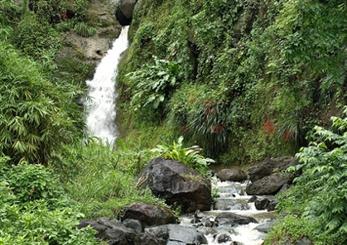
Almost all of the islands as the Indian and Pacific Ocean are covered with wet tropical forests - the jungle. On the coral atoll of these forests is much less diverse, and more on the volcanic islands. But essentially all plants of these islands are similar, for example coconut palm grows everywhere. In this article I want to put some plants in the tropical forests. WARNING! All unfamiliar plants are recommend to consider default poison! Even those that you just are not sure.
Coconut palm
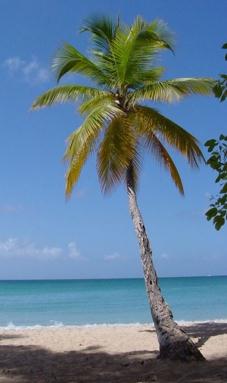
Coconut - a plant of sea coasts, preferring sandy soils. In the coconuts a lot of useful substances: vitamins A, C and B group, minerals - calcium, sodium, potassium, phosphorus, iron, natural sugars, proteins, carbohydrates, fatty oil, and organic acids. Coconut milk is often used as an alternative to the physical solute because a large content of various salts and trace elements. Coconut milk can help you regulate the salt balance of the body.
- Coconut has a reputation as a strong aphrodisiac, and normalizes the reproductive system. Milk and Coconut well restores strength and improves vision;
- Improves the digestive system and liver;
- Normalize thyroid function;
- Relax muscles and help with problems with joints;
- Enhance immunity and resistance to various infections, and reduce the adaptability of bacteria to antibiotics;
- The pulp and coconut oil, due to their member of lauric acid (the main fatty acid found in breast milk), and normalize blood cholesterol levels;
- Help the body to the flu and colds, AIDS, diarrhea, herpes, and diseases of the gall bladder Enjoy anthelmintic, antibacterial, antiviral action of wound healing;
- Reduce the risk of atherosclerosis and other diseases of the cardiovascular system, as well as cancer and degenerative processes.
WARNING! Falling coconut on the head can be fatal! This is the cause of death for many people!
Banana

If you want to quickly restore the reduced level of energy in your body - there's no better snack than a banana. Research has proven that just two bananas provide enough energy for 1.5 hours vigorous work. Good food, due to the large amount of carbohydrates you can eat at the instead of our potatoes. Helps with many diseases such as anemia, ulcers, lowers blood pressure, improves mental ability, helps with constipation, depression, heartburn. Helps skin get rid of warts. One banana contains an average of 60-80 calories. The composition of banana includes such chemicals as iron, potassium, sodium, magnesium, phosphorus and calcium. After eating two bananas during the day, you will meet the needs of the organism in potassium and two-thirds - in magnesium. In addition, the banana contains vitamins A, B1, B2, B3, B6, B9, E, PP. Contained in bananas with the substance ephedrine enhances the systematic use of the central nervous system, and it directly affects the overall performance, attention and mood.
Papaya

Leafs of Papaya, depending on their age, method of handling and proper use of the prescription for reducing high blood pressure, treating kidney disease, stomach pains and bowel problems. Papaya fruits are used in the treatment of fungal infections and ringworm. Papaya fruit and its leaves also contain an alkaloid karpain having deworming action, which in large doses can be dangerous. The fruits of papaya, not only in appearance, but also on the chemical composition very close to the melon. They contain glucose and fructose, organic acids, proteins, fiber, beta-carotene, vitamins C, B1, B2, B5, and D. Minerals are potassium, calcium, phosphorus, sodium, iron.
Mango
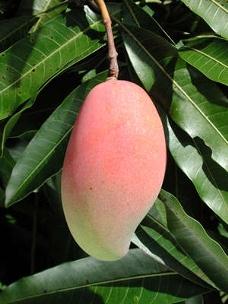
Mango normalize bowel, two green mangoes will save you from diarrhea, constipation, hemorrhoids and prevent stagnation of bile and disinfect the liver. By drinking green fruits (1-2 per day) improves the elasticity of blood vessels, due to its high iron content in the fruits of the mango is useful for anemia. A high vitamin C content makes it an excellent remedy for beriberi. If you use more than two unripe fruits a day may cause colic, irritation of the gastrointestinal tract and throat. Overeating of ripe fruit can lead to intestinal disorders, constipation and allergic reactions. Mango contains high amounts of vitamin C, B vitamins, as well as vitamins A, E, contains folic acid. Also, the mango is rich in minerals such as potassium, magnesium and zinc. Regular consumption of mangoes strengthens the immune system. Due to the content of vitamins C, E, and carotene and fiber, eating mangoes help prevent colon cancer and rectal cancer, is the prevention of cancer and other organs. Mango is an excellent antidepressant, improves mood and relieves stress.
Breadfruit
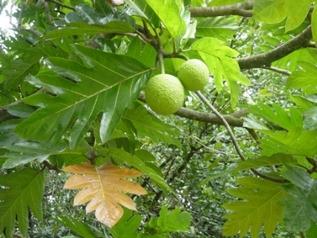
In some areas, particularly on oceanic islands, breadfruit - an important source of nutrition. Breadfruit is common in many tropical countries. Dry breadfruit pulp contains 4.05% protein, 76.70% carbohydrate and 331 kcal per 100 g Nutrition breadfruit 100 gr. 60-80% of starch, sugar 14%, fat 0.2-0.8%. Nutritional value of breadfruit seeds per 100 g - 34 g carbohydrates, 29 grams fat, 15 grams of protein. Breadfruit is one of the most productive plants consumed by humans, from one tree to shoot 200 or more fruits per season. In the South Pacific, the trees have a yield of 50 to 150 fruits per year.
Jackfruit
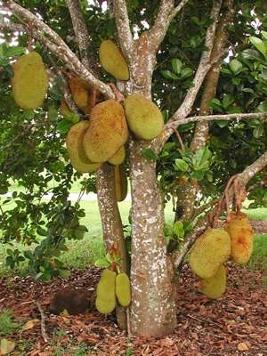
Jackfruit fruits are very nutritious and contain about 40% carbohydrate (starch) - more than bread. The seeds are also nutritious - they contain 38% carbohydrates, 6.6% protein and 0.4% fat. Unripe fruits are used as vegetables - they are boiled, fried and stewed. The ripe fruit is eaten fresh, out of which make salads and desserts. The most common in Southeast Asia and the Philippines.
Marangu
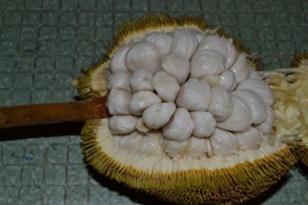
Fruit trees of the mulberry family, akin to breadfruit and jackfruit. His birthplace - South East Asia. Its fruits are a cross between a breadfruit and jackfruit - they are rather elongated, up to 20 cm in length, and their thick skin covered with soft spines, which harden as the fruit ripens. It is cultivated in Brunei, Indonesia, Malaysia, the Philippines and southern Thailand, mainly for local consumption, due to the brief shelf life of fruits.
Chempedak
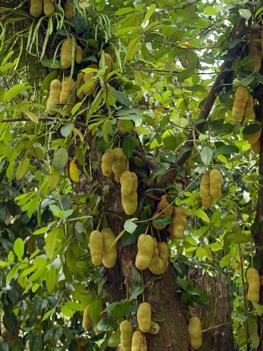
The flesh of mature fruit chempedak dark yellow, tender, juicy and sweet, wild plants is, however, sour, and odorless. Taste recalls Jackfruit with a taste of durian. Peel had a little sticky because of the content in her latex. The fruit ripens in 94-105 days. Grown in Malaysia (especially wide - in the states of Kedah and Perak), Brunei, Thailand and Indonesia. Chempedak fruits mainly from June to August. The pulp is eaten raw, roasted, in the form of desserts, the seeds are also edible.
Durian
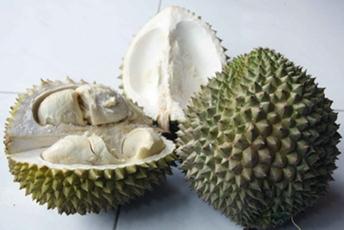
Growing in the tropical rain forests of Southeast Asia. Durian fruits reach a diameter of 20 cm and weight of 4 kg. They have a very hard shell and covered with strong spines that protect the contents of the unripe fruit of the animals. Durian has a nut-cream flavor, but it smells like rotten fish and sewage. However, the taste of ripe fruit pulp very good, which makes them a favorite dessert. Rhizomes durian is used as an antiviral agent. Odor appears when the ripe fruit hanging on the tree and become rotten (fermented) in, and cloves are soft (this is the fruit should be eaten, and if the slices are hard, the fruit is still "not ready") Do not drink alcoholic beverages with durian, otherwise morning breath is very fetid smell!
Pandan
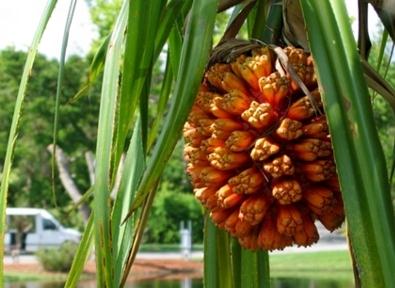
Fleshy rich in proteins, fats and vitamins and fruit stems of some species of pandan (pandan particularly useful (Pandanus utilis)) are eaten. On some Pacific islands, they are the only cultivated fruit trees. Leaves of other species (particularly Pandanus amaryllifolius) are used as vegetables and aromatic spices. Tougher leaves of some species are a source of fiber material for a variety of handicrafts.
Noni
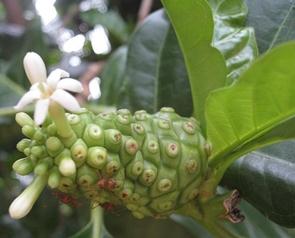
Noni grows in shady forests and open rocky or sandy shores. It's very taxing, and can grow in saline, volcanic and calcareous soils. The fruit is edible, but has an unpleasant bitter taste and pungent smell, like the smell of spoiled moldy cheese. However, these benefits are in some Pacific islands (Fiji, Samoa, Rarotonga), the staple food. It is a coagulant (ie, increased blood clotting), reduces fever, is an antiseptic and analgesic. Used in food poisoning, nausea, diabetes and even cancer. In today's world Noni is known as a tonic. It has long been Noni used to improve digestion and stimulate the gastrointestinal tract, treatment of diseases of the respiratory system, strengthen the immune system. Noni also has a calming effect on the nervous system, stimulates the endocrine system, has analgesic properties (arthritis), improves skin condition, it prevents premature aging.
Melidzho
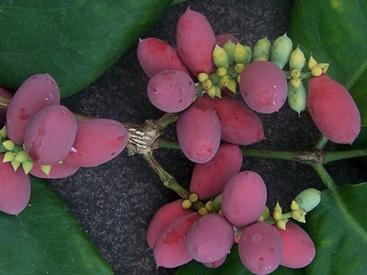
It is widespread in tropical Asia (India, Cambodia, Myanmar, Thailand, Vietnam, Indonesia, Malaysia, Papua New Guinea) and the Pacific Islands (Fiji, Samoa, Solomon Islands, Vanuatu). In the ripe state is colored from yellow to dark red. Have a firm leathery shell, inside which is the edible seed of the white, slightly bitter taste. The seeds, young leaves and inflorescences Melinzho used in food such as vegetables. Flour of roasted seeds used to make fine dry bread, which are then fried in oil, getting something like potato chips. The bark, like some other species gnetuma is used for durable fiber used to make thread and rope.
Carambola
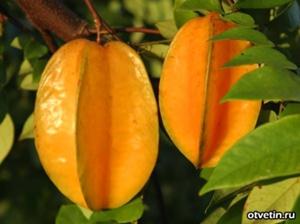
Grows in Sri Lanka, India and Indonesia, and now also widespread in South and Southeast Asia. The fruits of carambola also known as tropical stars, usually yellow or yellowish-brown color. The fruit crisp, juicy and come in two varieties: sweet and sour and sweet with a massive ribbed knobs are an excellent source of vitamin C, rich in potassium. People suffering from enterocolitis, gastritis or gastric ulcer and duodenal ulcers, especially in the acute stage, Carambola is not recommended due to the presence of oxalic acid in high concentrations. In the use of large quantities of these fruits can cause the development of renal pathology or disrupt salt metabolism in the body.
Mangosteen
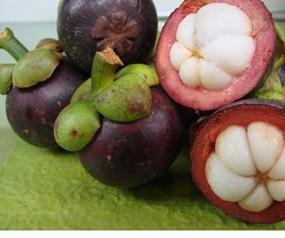
It is widespread throughout tropical Southeast Asia, and Africa, and Latin America. The shape of the fruit reminiscent of orange, 4-8 cm in diameter with a thick skin, which contains 7-18% tannin and is used as a tanning agent, and in medicine as an astringent. Inside the fruit of 6.8 snow white, sometimes orange slices with a very sweet, fragrant jelly-like, flesh melting in your mouth. In the pulp contains 10% sugar. In each lobe there is a seed. In mature fruit rind of dark purple or red-purple color. Mature fruits have a very attractive appearance. Used mainly in fresh as a dessert.
Lichee
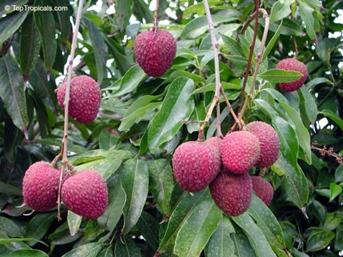
One of the most popular fruits in South-East Asia. Litchi fruits are used in the food fresh, prepared from these various desserts (jellies, ice cream, etc.). In litchi contains many proteins, pectin, potassium, magnesium and vitamin C. However, the main thing - a very high content of nicotinic acid - vitamin E, which actively prevents the development of atherosclerosis. Inside the pulp of the fruit is a large bone, flesh of the fruit is about 70% of total fruit and contains: 10-15% of sugars, proteins - 1,15-1,20, acid - 1.1%, are a rich source of vitamin C, salt , phosphorus, calcium and iron. The content of carotenes in low.
Ivory apple or Indian Dilleniya
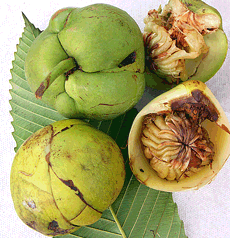
An evergreen tree, up to 15 m, what is happening in Southeast Asia, India and Sri Lanka. The leaves are 15-36 cm long, with a grooved surface and veins stand out. The flowers are large 15-20 cm in diameter with white petals and numerous yellow stamens. The fruit of a complex consisting of 15 carpels increased in size, each containing five seeds and their surrounding heavily overgrown fleshy sepals. The diameter of the fruit varies from 5 to 12 cm fruit pulp is edible and is widely used in Indian cuisine. From it is prepared curries, jams and jellies.
Salak or snake fruit
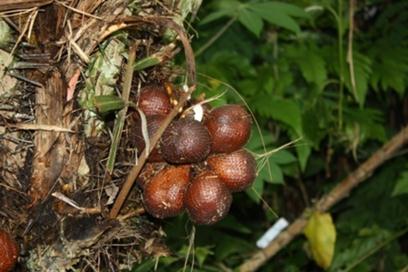
Fast-growing tropical tree with multiple trunks with feathery leaves, petioles, and the axes of which are covered with spines. Clusters of red-brown fruits grow directly above the ground at the base of the trunk. Distributed mainly in Southeast Asia. The fruits are eaten herring in its raw form, are prepared fruit drinks, salads. Unripe fruits are marinate. To clean the fruit should be carefully cut or tore scaly skin at the edge and remove it as a shell from the egg. Salak (snake fruit) contains tannin, which displays the body of all harmful substances, astringent, hemostatic, and antidiarrhoeal.
Tamarind Indian
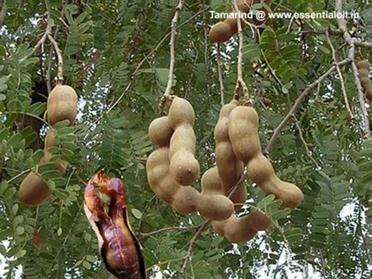
Fruit - brown bean, which consists of a soft pulp and seeds of many dense. The flesh is edible and popular. It is used as a spice in Asia and in Latin American cuisines. the Philippines, the leaves are traditionally used for making herbal tea that relieves fever in malaria. Due to its healing properties, tamarind is used in Ayurveda for the treatment of diseases of the digestive tract. Tamarind has an anti-infective agent. Roasted seeds can be used as a sedative. The seeds contain organic acids and vitamin A.
Annona scaly or Sugar Apple
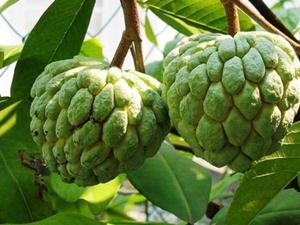
Sugar apple is widely cultivated in South and Central America, the Antilles, India, Indonesia, South China, the Philippines, Africa, Australia and Polynesia. The pulp of ripe fruit is edible sugar apple. Before use, the rough skin of the fruit is usually opened, then the pulp segments are used in the food and spit out the seeds. Seed kernels contain 14-49% non-drying oils, which can be used to replace groundnut in the production of soap. Decoction of leaves used as a tonic and febrifuge. Decoction of the bark and roots, and unripe fruits have astringent properties and are used in dysentery.
Chiku or Sapodilla
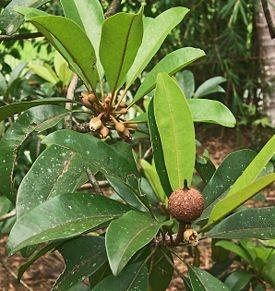
Ripe fruit is covered with dull pale or rusty brown thin skin, flesh, brown, with yellow or pink, soft juicy. At the present time also cultivated throughout tropical America, India, Indonesia, Malaysia, Sri Lanka and the Philippines. Ripe fruits are edible Sapodilly fresh. Sapodill tree is also grown for latex - latex. Unripe fruits are rich in tannin and is used as a means to stop the diarrhea. Decoction of the bark is used as an antipyretic and anti dysenteric remedy. Decoction of the leaves in combination with Sapodilly leaves chayota used to lower blood pressure. The liquid extract crumpled seed - a sedative.
Pomelo (Lemon)
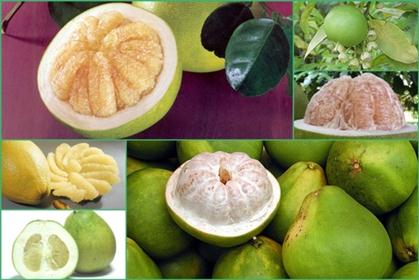
Pomelo originally appeared in the south-east Asia, Malaysia, grows on the islands of Tonga and Fiji. Pomelo fruits eaten raw and processed forms. Calories 100 g of fruit flesh - 25-39 kcal. Pomelo contains a large amount of vitamins A and C. Pomelo has a beneficial effect on the digestive tract, since it includes a lipolytic enzyme that promotes the accelerated breakdown of proteins. Therefore, this citrus is a dietary product.
Passion Fruit
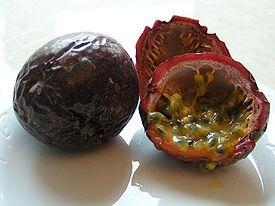
The plant is native to South America: Brazil, Argentina and Paraguay. In the New Zealand grows in Hawaii, the Galapagos Islands, Macaronesia. Along with pulp, passion fruit seeds are also edible. Passion fruit juice inhibits the growth of cancer cell formation. Phenolic acids and flavonoids contained in this fruit, have a protective function for the heart. Also, the fruit is known for its antimicrobial activity. The fruits have a very high content of carbohydrates and simple sugars. They contain plant sterols, which help in lowering blood cholesterol levels. It provides the necessary amount of protein and iron, in which our body needs. Also, the fruit has a high content of vitamin C, vitamin A, iron, fiber and potassium.
Longan
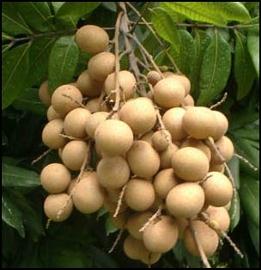
Common in China, Taiwan, Vietnam and Indonesia. Longan has a juicy sweet, very fragrant, like the lychee flavor with a unique touch. Fruits contain a lot of sugar, vitamin C, calcium, iron and phosphorus, as well as many bio acid useful for the skin.
Bilimbi
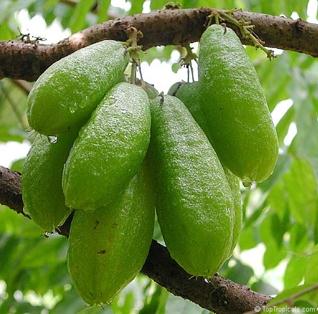
Now cultivated in Indonesia, Thailand, India, Philippines, Myanmar, Sri Lanka, Tanzania. The fruit is too acidic Bilimbi to be eaten fresh. Sometimes the raw unripe fruits are used, along with cooked rice, beans, fish or meat. Juice Bilimbi due to high concentration of oxalic acid is used for washing hands from paint, bleach white tissue, removing the tarnish from brass. In the Philippines, the leaves are applied Bilimbi for skin eruptions and rheumatism. In other places they are applied to the bites of poisonous animals. Decoction of leaves is used as an expectorant. Its infusion is also effective in inflammation of the rectum. Decoction of flowers used as a remedy for coughs and diarrhea.
Gandara
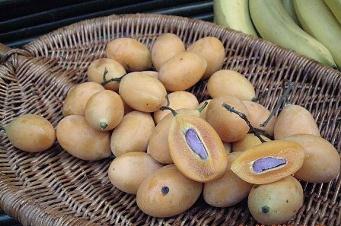
Homeland Gandaris are Malaysia and Indonesia. At present, grows wild in tropical areas and is widely cultivated as a fruit tree in Sumatra, moist parts of Java, in Borneo, in Ambon, and Thailand. Fruits contain carbohydrates, calcium, phosphorus, iron, vitamins A, B1, B2, C, and niacin.
Sugar palm
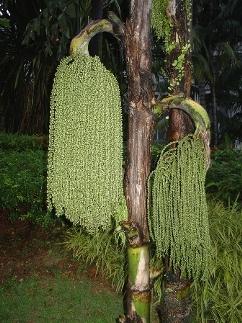
Sugar palm is common on the East Indies in the west to Indonesia, Malaysia and the Philippines in the east. Her home, most likely, is the Malay Archipelago, in the rest of it is naturalized. Juice of male inflorescences collected in Asian countries on a commercial scale to produce sugar. Palm trees, unproductive in terms of getting the juice is cut down and removed from the starchy sago core. One of the industrial products of the sugar palm - a solid and not rotting in the water, fiber, covering the trunks of palm trees. Fruits can also be eaten after a special cooking because of their fresh juice and pulp of very corrosive. To get the sugar, bring the juice and cook it until a thick syrup.
Convolvulus brasiliensis of the family Convolvulace
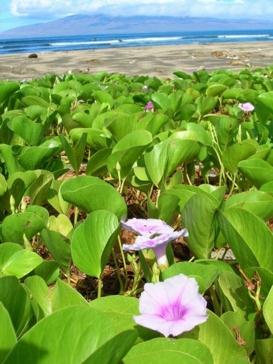
It grows on sandy beaches throughout the tropics. Along with the usual Tespeziey used as an antidote to the poison borodavchatki. Remedy against the poison is stone-fish crushed and dried over a fire mixture of leaves and fruits from the leaves of Convolvulus brasiliensis Thespesia populnea; this mass is placed on the wounds the place. (material wikipedia)
Thespesia populnea
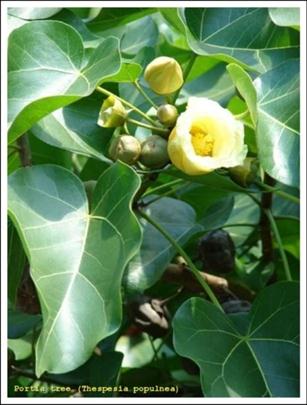
It grows in the tropics. The bark and leaves are used in traditional folk medicine as a healing and anti-inflammatory for topical treatment of skin, teeth and gums.
Tamanu
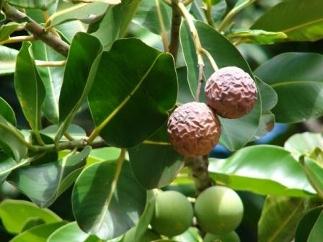
The resin obtained their burnt wood Tamanu has been used to treat wounds and ulcers. A mixture of resin, strips of bark and leaves immersed in water. A pop-up to the surface oil has been used to treat eye diseases. It is believed that the resin contains benzoic acid and is useful for chronic wounds and skin lesions.
Cora. The bark is used as an astringent, contains 11-19% tannins. Used as a decoction for internal bleeding and as a wash for poorly healing ulcers. The bark acts as an antiseptic and as a means of disinfection. Re grated with lime juice, is used to deodorize underarms, groin and legs. Root. Decoction of the root Tamanu for dressing ulcers, as well as sunstroke. The root is embedded in a bandage.
Sheet. The leaves are soaked in water, have a bluish color and a natural for the groin, and are used in inflammation of the eye. Leaf extract is also used inside Islands for sunstroke in combination with external application of bandages with a decoction of the root. Reversible treatment consists in making a decoction of the root inside, and the imposition of a hot compress of the leaves. In Madagascar, the leaves are used for the treatment of the eye. When soaking the leaves have a pleasant aroma and are used in the Philippines, as an astringent for bleeding, in Indonesia, as a lotion for the eyes. The Papuans of New Guinea often use the leaves in many cases of skin diseases. On the island of Manus, the leaves are heated over a flame until soft and then used to treat sores, boils, cuts, rashes and acne, while on the island of Dobby leaves boiled and occasionally washed the skin with dermatitis. Do residents of New Caledonia, Samoa and the leaves are also used to treat skin inflammations, ulcers, leg wounds.
Fruit. According to the works of some authors, the fruits are poisonous to some degree. Safe to eat only the en dosperm unripe fruit.
Vigna sea
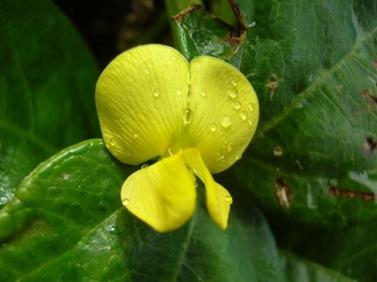
Is an antidote for poisoning fish. In view similar to Convolvulus brasiliensis.
Asian Krinum
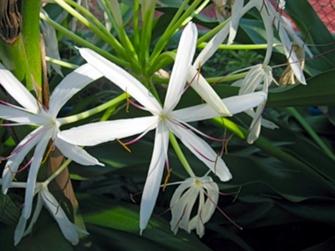
It occurs in Asia: China, Japan, Korea, India, Sri Lanka, Cambodia, Laos, Myanmar, Thailand, Vietnam, Brunei, Indonesia (Java), Malaysia, Papua New Guinea, Philippines, Singapore, Australia: Northern Territory, in the Marshall islands, Guam, Fiji, New Caledonia, Samoa, Mauritius. Its use in complicated births, and for the prevention of neonatal jaundice. This is - as analgesic, antiseptic and anti-inflammatory agent.
Edible Cassava
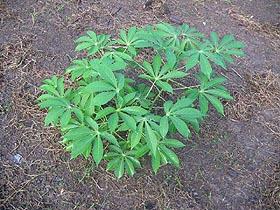
An important food plant in the tropics. Of the large tuberous roots of this plant are swollen, reaching a length of 1 m and having a mass of 15 kg, receive nutritious flour and cereal starch (tapioca, sago or tapioca). Cassava is widely cultivated in South and Central America, Africa and Asia, especially Indonesia. Raw cassava roots contain hydrocyanic acid glycoside linamarin concentration which separates the varieties of cassava in the Bittersweet (actually negorkie). A dose of hydrocyanic acid contained in 400 grams of raw bitter cassava, lethal to humans. Seeds of some varieties act as a laxative and cause vomiting. Although prussic acid at room temperature rather quickly evaporates, for its complete fumigation requires careful grinding the tuber. Traditionally, cassava roots are cleaned, rubbed or crushed, soaked and cooked, which significantly reduces the amount of cyanide. An alternative method was proposed by Howard Bradbury: milled cassava mixed with water are placed in a thin layer of 1 cm in the shade, where it is dried for 5-6 hours. This leads to almost complete evaporation of cyanide. The resulting extruded mass is a source of nutritious flour or cereals rich in starch.
Scaevola
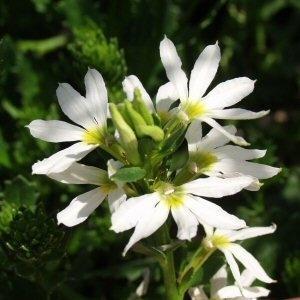
Many species are found on sandy and rocky sea coasts of Australia and the Pacific atolls. It is used as a tonic to ease childbirth and postpartum recovery to women in labor. It is also used when bathing a newborn, it is - a gentle astringent, used to strengthen the baby's health and prevent rashes. The fruit is also used in the treatment of acute infectious conjunctivitis, depression and pain.
Physalis Peruvian
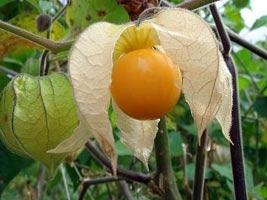
Now introduced and cultivated in South Africa, parts of Central Africa, Australia, India, China, Malaysia, Belarus and Philipines. Ripe fruit are edible Physalis Peruvian fresh. They are used to make jams, puddings, fruit salads and cocktails. In Colombia, a decoction of the leaves is used as a diuretic and anti-asthma drug. Unripe fruits are poisonous!
Sweet basil
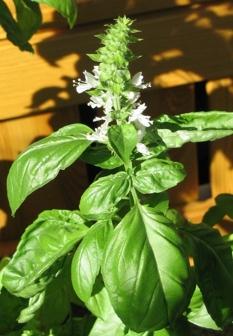
The above-ground portion of plants contain 1-1.5% essential oil, up to 6% tannins, glycosides, saponins, minerals, ascorbic acid, sugar, fiber, protein, vitamin P, a precursor of vitamin A, camphor. Essential oil contains eugenol, methyl chavicol, cineole, linalool, camphor, otsimen. Eugenol is a major component of essential oil (70%). Essential oil is mainly in the inflorescence. The highest yield of oil is observed in the phase of full flowering. Drying greatly reduces the yield of oil. The seeds contain 12-20% fatty oil, the leaves - 0,003-0,009% carotene, up to 0.15% of routine.
Black pepper
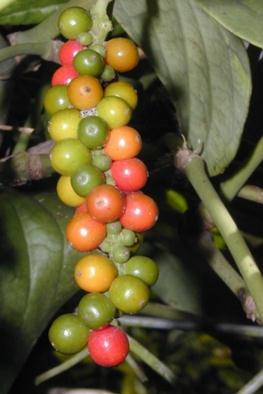
In a pepper resin (1-2%), fatty oil (6-12%), a lot of starch. Burning substance is an alkaloid piperine of pepper (5-9%), and the smell is caused by the presence of essential oil (0,9-2,5%). The composition of essential oils include dipentene, phellandrene, and caryophyllene sesquiterpene. Black pepper is produced from unripe fruits of the plant. In order to purify them and prepare them for drying, the fruit quickly scald in hot water. Heat treatment destroys the cell wall pepper, speeding up the work of enzymes responsible for the "browning". The fruit is then dried in the sun or by machine for several days. During this time, the shell of the fruit usushivaetsya and darker around the seed, forming a thin layer of wrinkled black. It reliably determined only piperine bitter glycoside, volatile and fixed oils, starch, vitamins E and C. According to the physicians of the ancient East, black pepper increases the digestive power of the stomach and the energy of the nervous system, strengthens muscles, and this has no equal. When ingestion of black pepper opens up phlegm (which vainly try to achieve many of the chronic bronchitis), warms the digestive organs, improves appetite, treats acid eructation, dilutes thick blood from the melancholic and phlegmatic, expels wind from the intestines.
Pepper cubeb
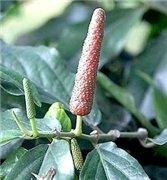
Climbing shrub native to the Greater Sunda Islands (Indonesia) - Java, Sumatra and Borneo. The most fragrant of all the existing peppers. Spicy-hot taste of this spice gives nepiperin contained in black pepper, and kubebin and a large number of essential oils (in pepper cubeb of 12%, and in the black - maximum 4%). The specific composition of essential oils and contained in the resin cubeb pepper gives it a kind of reminiscent of camphor scent. Pepper is used in the treatment of urogenital system and ureters, as having a positive effect on the gastrointestinal tract.
Nutmeg
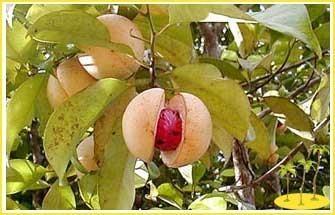
Homeland - Moluccas: in the culture - in the tropics of both hemispheres. The composition of nutmeg include: elemitsin - 0.35% myristicin - 1.05% safrole - 0.195%, methyleugenol - 0.09%, metilizoevgenol - 0.055%. Substances contained in nutmeg, produce a psychedelic effect. The main component of nutmeg, essential oil, protein and starch. Contains from 7 to 15% essential oil, which consists of various terpenes, as well as 3-4% myristicin, elemitsin etc. Nutmeg has psychoactive properties.
Allspice, or aromatic Sizigium
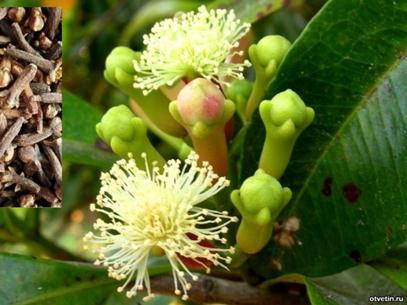
Homeland carnations are the Molucca Islands (Malay archipelago in Indonesia). The buds contain up to 20% of essential oil and about 20% tannins. The main component of clove essential oil, eugenol (70-90%), and it contains 3% atsetilevgenola and caryophyllene, which is an impure mixture of sesquiterpenes, vanillin, proteins and mineral salts. Carnation has a burning taste and a peculiar strong odor. The high efficiency of anthelmintic action of the extract of flowers in peanut oil at doses of 1 g, 0.5 g and 0.1 g / kg when administered into the stomach of dogs with ascariasis. Alcoholate flower plants in vitro, has batkteriostaticheskoe effect on diphtheria bacillus, the causative agent of anthrax, golden and white staphylococcus, bacillus paratyphoid A and B-type bacteria dizentiriynye Shigi, Flexner, bacilli of cholera and plague, and influenza virus. Strong fungicidal effect drugs have on the plant species of fungi that cause disease of the skin, but irritating to the skin, they do not have.
Gidnokarpus
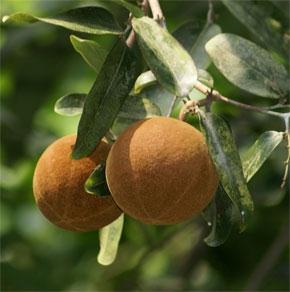
The genus of plants of the family Aharievye grown in tropical Asia (Indochina, Malaysia, Indonesia, Philippines), tropical Africa and tropical America. Oil extracted from seeds of some species gidnokarpusa used as a specific remedy for acid-fast bacteria, including pathogens of leprosy. Indications: leprosy (especially in the initial stage), tuberculosis, trachoma, sciatica, rheumatism, psoriasis, filariasis (elephantiasis), athlete's foot, athlete's foot nails, other skin diseases (eczema, scabies, ringworm), wounds, ulcers; prevention and treatment of obesity. Allowed only as an external application toxic. May cause skin irritation.
Cinchona
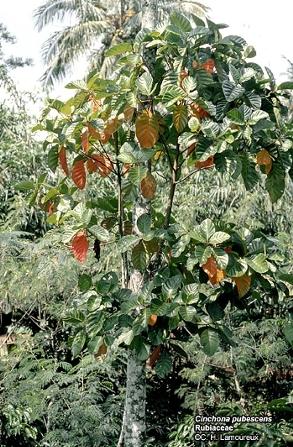
From a distance, resembles the usual cinchona alder, but leaves it shiny and the whole crown is slightly pinkish tinge. Pink, red or yellow-white fragrant tubular flowers clustered in dense panicles at the ends of branches. Fruit - ovoid or oblong capsule containing winged seeds. Currently, cinchona is common in many tropical countries, the bulk of world production of cinchona bark falls on Indonesia. Cinchona tree became famous because of its bark - South American natives have long treated her malaria. In the bark of trunks, branches and roots of the tree contains about thirty alkaloids having antimalarial, tonic and antiseptic effect, for them cinchona and divorce. Outside the cinchona covered with dark brown cap, often bearing lichens, the inner surface is smooth, reddish-brown, with a very bitter taste but no smell. Active ingredients cinchona bark - alkaloids, quinoline derivatives, the main-quinine and its isomer (stereoisomer) - quinidine, and their 6-dimetoksiproizvodnye - cinchonine and tsinhonidin.
Aloe
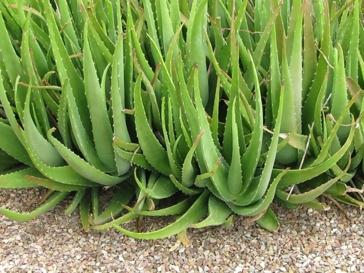
Plants are originally from Africa, widely distributed in South Africa, the mountains of tropical Africa, Madagascar and the Arabian Peninsula. The leaves and stems of aloe contains allantoin, natural antioxidants in the form of vitamin B complex, vitamins C and E, and beta-carotene, which the body turns into vitamin A. At present, various preparations of aloe used in diseases of the gastrointestinal tract, for treatment of gastritis, enterocolitis, gastroenteritis, gastric ulcer and duodenal ulcer, and bronchial asthma, pulmonary tuberculosis, and hypochromic anemia. In the ophthalmology practice of aloe used for the treatment of blepharitis, conjunctivitis, keratitis, vitreous opacities, progressive myopia. In addition, for the treatment of burns, wounds and nonhealing ulcers, with the radial skin lesions, inflammatory diseases of the mouth, to regulate menstruation. Aloe juice can cause poisoning.
Bamboo
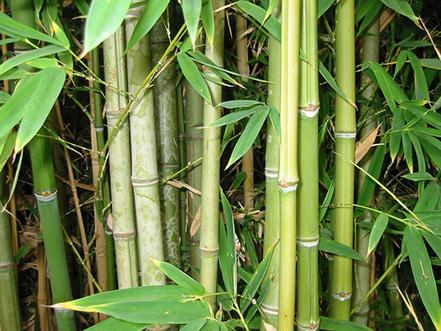
As a tropical and subtropical plants in the wild bamboos native to Asia, Europe, the Americas, Africa and Australia, known groves and in Oceania. Young bamboo shoots are edible as a vegetable. Cut the bamboo shoots are very strong, light-yellow core with narrow ridges of the tribes of the air chambers. Bamboo is used in food, cut off immediately after the shoot, when the shoots are still covered with a very strong, dark brown, pubescent leaves that before the cooking is removed. Because bamboo shoots contain a lot of silicic acid (H2SiO3), which is necessary to maintain the normal condition of the hair, skin and bones, and which has a calming effect in depression, they are used in traditional oriental medicine. From the tough, light and very durable wood can build houses. Once all of the capital of Thailand was resting on bamboo rafts. Bamboo is also built bridges and aqueducts.



